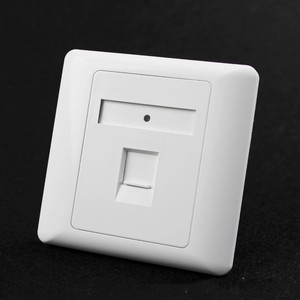
All categories
Featured selections
Trade Assurance
Buyer Central
Help Center
Get the app
Become a supplier

(454 products available)



















































The 86 type 2 port faceplate is an integral component in structured cabling, serving as an endpoint for cable installations. This faceplate is designed to accommodate a variety of communication needs within the telecom industry, providing a seamless and organized connection point for cables and devices.
The design of the 86 type 2 port faceplate is engineered to support easy access and connectivity. It typically features a rectangular shape that fits standard mounting boxes and enclosures. The two ports allow for the installation of keystone jacks, which can range from Ethernet, RJ11, to HDMI, depending on the communication requirements.
Keystone modules are the backbone of the 86 type 2 port faceplate. These snap-in modules can vary, including the RJ11 keystone for telephony and the HDMI keystone for audio-visual connections. The versatility of the faceplate allows for a mix-and-match approach to meet diverse telecommunication needs.
Materials used in the construction of the 86 type 2 port faceplate are chosen for durability and performance. High-grade plastics or metals ensure longevity and maintain the integrity of the signal transmission. The robust build also protects against physical damage and environmental factors.
The application of the 86 type 2 port faceplate is widespread in the telecommunications sector. It is commonly used in commercial and residential buildings, facilitating ethernet and LAN connections for computers, telephones, and other network devices.
Utilizing an 86 type 2 port faceplate in telecom setups offers the advantage of a tidy and manageable network environment. It simplifies cable management, reduces clutter, and enhances the aesthetic of the space. Moreover, it provides a standardized interface for connectivity, making maintenance and upgrades more straightforward.